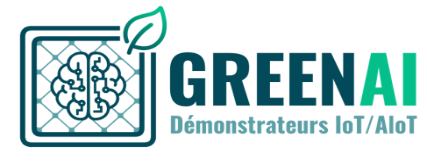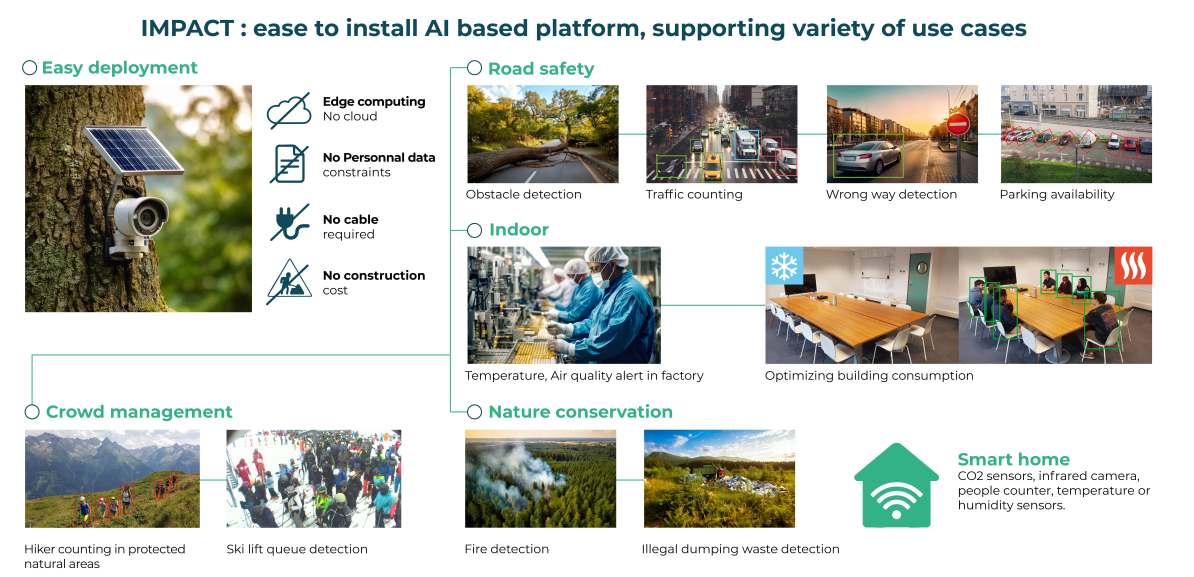Project GreenAI presented in Grenoble

On 13th November 2024, members of our Image Science & Computer Vision joined the companies Asygn and Dracula Technologies in Grenoble to present GreenAI, a groundbreaking European industrial platform dedicated to the development of energy-autonomous and intelligent connected devices. This project, co-financed by the French government within the framework of the France 2030 program, the Auvergne-Rhône-Alpes Region, and Grenoble Alpes Metropole, addresses critical challenges in the Internet of Things (IoT) and artificial intelligence (AI).
Revolutionizing Connected Devices
With 18 billion connected devices worldwide in 2024, the need for innovative approaches to data processing and energy efficiency is more pressing than ever. Most connected devices currently depend on cloud servers, which create challenges like bandwidth limitations, high energy consumption, and data privacy concerns.
GreenAI offers a transformative solution by embedding AI directly within devices. This enables real-time data processing, reduces reliance on cloud servers, lowers bandwidth costs, and enhances data security by minimizing unnecessary data transmission.
"The goal is to process data as close to its source as possible, transmitting only the essential information," explains Adrien Vialletelle from ASYGN.
GreenAI unites three regional technology innovators:
- Dracula Technologies specializes in organic photovoltaic cells. As part of GreenAI, it is developing a new generation of innovative cells designed to harness ambient light within a room, making IoT devices sustainable and environmentally friendly.
- The Hubert Curien Laboratory concentrates on energy-efficient AI tailored to computer vision. Supported by two scientific theses, our lab's team is optimizing neural network architectures for deployment on resource-efficient electronic chips. Its research focuses on: 1) Developing open-source optimization software for CNN-based architectures.; 2) Exploring physics-informed neural networks to enhance AI efficiency.
- Asygn coordinator of the project, focuses on low-power electronic chips. It is developing an ultra-low-power hardware accelerator to support the artificial intelligence created by the Hubert Curien Laboratory. This chip equips IoT devices with computer vision capabilities, enabling efficient, localized data processing.
Applications for the Future
By 2026, GreenAI aims to deliver two demonstrators showcasing its technology:
- Smart Building/Home Automation: Transforming how we monitor air quality in buildings while enhancing energy efficiency and automation.
- Traffic Monitoring: Improving safety and traffic flow in low-light conditions, such as tunnels.
Examples of Use
The intelligent IoT devices developed through GreenAI collect data from integrated sensors. This data is processed and analyzed autonomously using artificial intelligence.
By combining AI, low energy consumption, and renewable energy sources, GreenAI’s solutions address industry demands for smart, sustainable, and scalable devices. These easy-to-deploy technologies aim to revolutionize not only road safety and indoor environments, but could also find applications in nature conservation and crowd management.
(Graph by ASYGN)
The event was attended by Catherine Staron, Vice-President of the Auvergne-Rhône-Alpes Region, and Florent Cholat, Metropolitan Advisor of Grenoble-Alpes Métropole.
The project has been so far covered by several news outlets:


